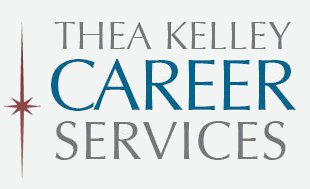 Wondering how to avoid ageism with your resume? You may be pleasantly surprised by what a difference you can make with some smart formatting and attention to key details.
Wondering how to avoid ageism with your resume? You may be pleasantly surprised by what a difference you can make with some smart formatting and attention to key details.
Resume Tips for Older Job Seekers
- Don’t put an old-fashioned email address at the top of your resume.
One of the first things a recruiter sees on your resume is your email address. Using Hotmail, AOL or even Yahoo sends a signal that you’re old and set in your ways. If you’re still using one of these providers, I recommend you get a Gmail address. Just make sure you check it frequently, or set it to forward your mail to the more frequently checked account.
2. Use an up-to-date resume format.
A modern resume doesn’t have to mean an elaborately formatted one. A few simple points will ensure your resume doesn’t cause recruiters to picture you with bifocals and a walker.
Don’t put an “Objective” at the top of your resume. This resume feature has gone out of style, since it focuses on what the job seeker wants, while the employer is more interested in what they want. Instead, use a headline (below your name and contact information) stating what you do, e.g., Business Analyst, or Senior Human Resources Professional. You can expand on this by working a key selling point or two into the headline–e.g., Business Analyst with MBA & Pharma Experience–or into a subtitle below that.
Leave out “References available upon request.” This line has been abandoned because it’s unnecessary; it goes without saying that you have references.
If you’re proud of your LinkedIn profile, include a URL. (If you’re not proud of it, read 10 Ingredients of an Excellent LinkedIn Profile.) If you have a professional website, blog or portfolio that supports your brand, include that too. Note: Some older applicant tracking systems may interpret hyperlinks as viruses.
3. Omit long-ago jobs—or include them in a special section without dates.
How far back should you go in listing past jobs? Ideally, you want to show a few years more experience than they’re asking for, but not vastly more.
This doesn’t necessarily mean you have to leave out that highly prestigious company you joined in your twenties. By creating a section headed “Additional Experience,” you can mention or summarize key points about your earlier experience without including dates. It might look like this:
ADDITIONAL EXPERIENCE
Built skills in quantitative analysis and team leadership through challenging roles within companies including X and Y.
Or, if the job titles are important:
ADDITIONAL EXPERIENCE
Job Title, Name of Company
Another Job Title, Name of Company
This is not intended as a place to put all of your earlier jobs–only the ones that will really enhance your resume. And since you’re not including dates in this section, you don’t have to list these jobs in chronological order. You could, for example, but the most impressive one first.
There are many ways to customize this section to best serve your purpose. For example, you could add a line or two under each job to highlight your best accomplishment from that role. Just don’t add so much information that your Additional section begins to look too similar in format to the main experience section. That would only draw attention to the one thing that’s different–the omitted dates!
4. Skip the outdated skills.
Leave out skills and tools that aren’t used these days. They’re dinosaurs, and they make you look like a dinosaur, too.
5. Don’t date yourself in your education section.
It’s quite common these days to omit the dates you earned your degrees. If you graduated a long time ago, it’s probably a good idea to do so. But let’s say you earned your bachelor’s 20 years ago and your master’s last year. You’d like the employer to see that you’ve updated your knowledge with the recent master’s, but it would look odd to list a date for the later degree and not for the earlier one. You could either leave the dates off both, or list only the more recent degree.
For more tips on resume writing, read 10 Resume Must-Haves.
Bonus Tip: Don’t be outed by your LinkedIn profile.
It’s common for recruiters to go straight from your resume to your LinkedIn profile to see what else they can learn about you. All of the suggestions above can be applied to your profile, except that you can’t create an “Additional Experience” section like you can on a resume. Instead, if you want to mention earlier roles without providing dates, you can mention them toward the end of your About section, or enter them as projects. (Click Add Profile Section, select Accomplishments and then Projects.)
What about the photo? A photograph can certainly give away your age. On the other hand, profiles with photos are more credible and engaging, plus they get up to 21 times more views, according to LinkedIn. Rather than omitting a photo, obtain a photo that makes the most of your appearance. It doesn’t have to cost any money; a shot taken by a friend can be very effective if you take care with the lighting (outdoors in the early morning or late afternoon, or in the shade), take dozens of shots in different locations (because the lighting will vary, as well as the backgrounds) throughout your back yard, say, or a park. Then choose the best of that large batch. One reason professional photographers deliver excellent images is that they take many, many shots and choose the best.
Now that you know how to avoid ageism on your resume, get ready for successful interviews. Read my posts about how to prevent age discrimination in your interviews, overcome interview mistakes mid-career professionals make, and succeed in interviews where the boss is younger than you. (This post has been updated in 2025.)

